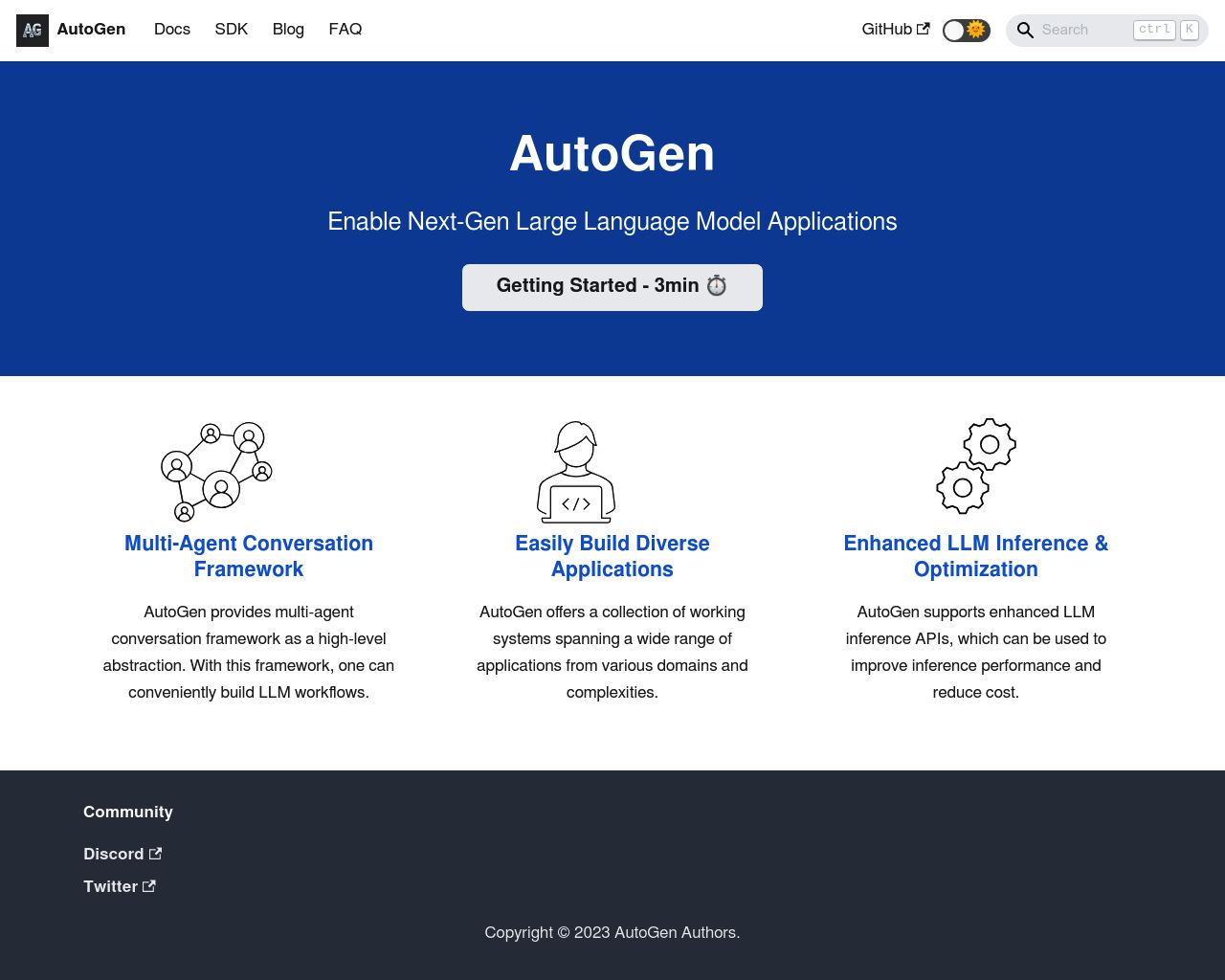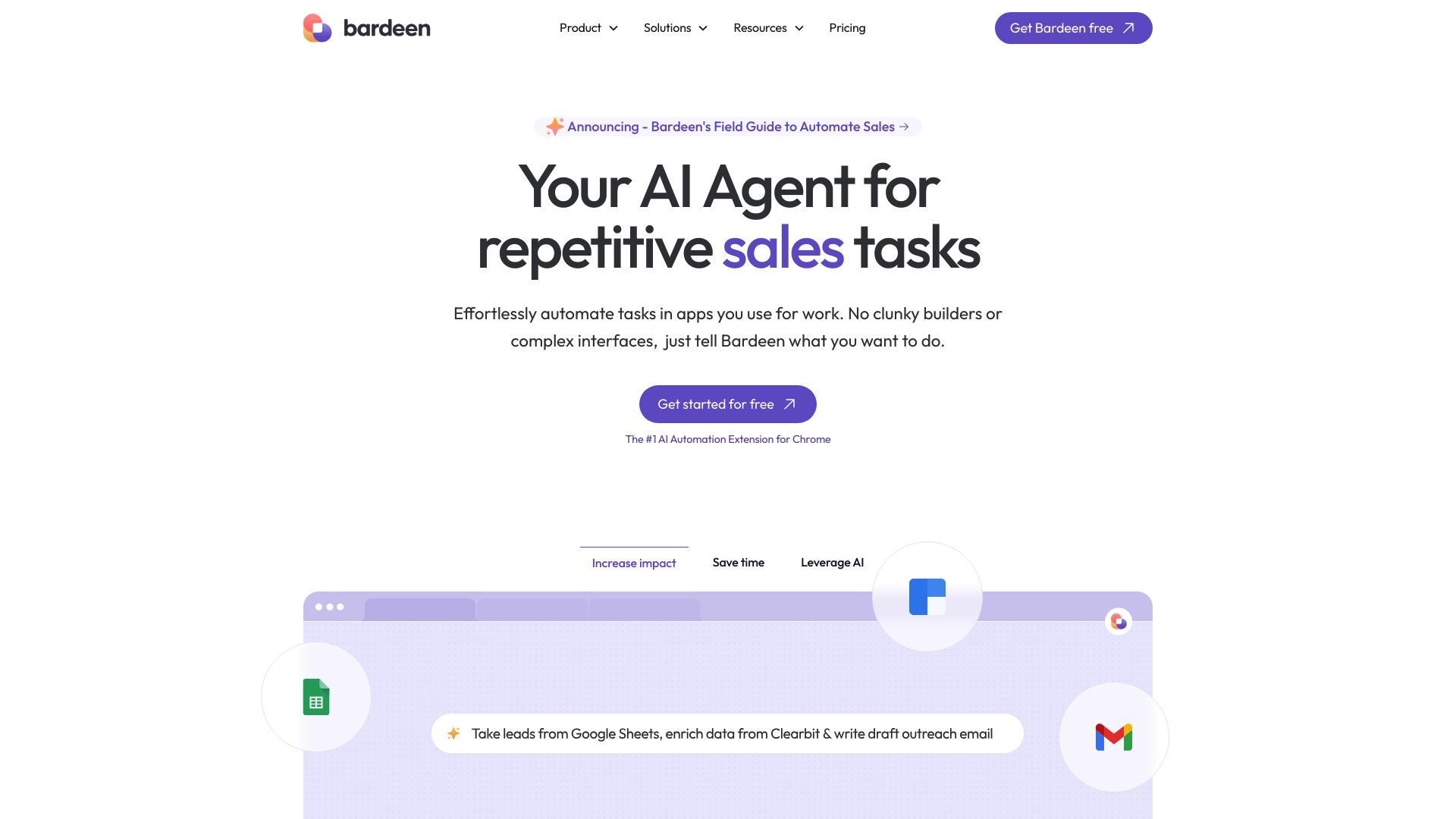AutoGen vs. Bardeen AI: Feature Comparison
AI revolutionizes software development and automation, empowering businesses to tackle complex challenges with unprecedented efficiency. This comparison explores AutoGen, Bardeen AI, and SmythOS, three cutting-edge platforms reshaping the AI landscape. AutoGen’s multi-agent framework enables developers to create sophisticated AI applications, while Bardeen AI offers no-code web automation for non-technical users. SmythOS emerges as a versatile solution, combining powerful AI capabilities with user-friendly interfaces. We’ll examine each platform’s strengths, limitations, and ideal use cases, helping you choose the right tool to propel your organization into the future of AI-driven innovation.
AutoGen Overview
AutoGen empowers developers to build sophisticated AI applications using multi-agent conversations. This open-source framework orchestrates interactions between customizable agents, Large Language Models (LLMs), tools, and humans to tackle complex tasks autonomously.


AutoGen’s core strength lies in its multi-agent architecture. Developers can create teams of AI agents that collaborate, each with specialized roles and capabilities. These agents leverage LLMs like GPT-4, combining their strengths to solve problems through dynamic conversations. The framework supports both fully autonomous operation and seamless human-in-the-loop interactions, adapting to various use cases.
AutoGen empowers developers to build sophisticated AI applications using multi-agent conversations.
The platform excels in optimizing LLM performance. AutoGen incorporates advanced inference techniques, including tuning, caching, and error handling. This maximizes the value extracted from expensive language models while improving reliability. Developers benefit from built-in debugging tools and comprehensive logging of API calls, facilitating the creation of robust AI systems.
AutoGen demonstrates versatility across diverse applications. From automated task solving and code generation to facilitating group chats for complex problem-solving, the framework adapts to numerous scenarios. Its support for persistent conversation threads enables context retention and more natural interactions. While AutoGen offers powerful capabilities, it requires coding skills to fully utilize. The lack of a visual builder or no-code interface may present a steeper learning curve for non-technical users compared to some alternatives.
Bardeen AI Overview
Bardeen AI offers a no-code web automation platform as a Chrome extension, enabling users to automate repetitive tasks through pre-built templates and a visual workflow builder. This approach democratizes automation, allowing users without coding expertise to create customized workflows for their daily tasks.
Bardeen AI offers a no-code web automation platform… enabling users to automate repetitive tasks through pre-built templates and a visual workflow builder.


The platform’s key features include a drag-and-drop workflow builder for creating automations called Playbooks, a library of pre-built actions and triggers for popular apps like Gmail and LinkedIn, and AI-powered capabilities such as text classification and data extraction. Bardeen AI leverages models like GPT-3 to enhance its automation capabilities, blending AI assistance with human guidance.
Bardeen AI excels in personalized automation, allowing users to build workflows tailored to their specific needs rather than offering one-size-fits-all solutions. The platform emphasizes participative automation, where users actively engage to guide the automations when necessary, fostering a collaborative approach between human users and AI-assisted workflows.
Bardeen AI excels in personalized automation, allowing users to build workflows tailored to their specific needs rather than offering one-size-fits-all solutions.
While Bardeen AI shines in UI-based web automation and human-in-the-loop interactions, it has limitations in areas such as fully autonomous functionality, scalability for enterprise-wide needs, and advanced deployment options. The platform appears best suited for use cases where some ongoing user participation is feasible, rather than completely hands-off automation scenarios.
Bardeen AI’s vision centers on evolving automation from pure efficiency to augmenting human capabilities through AI participation. This approach positions the platform as a tool for enhancing productivity and decision-making in day-to-day tasks, rather than replacing human involvement entirely.
Feature Comparison
AutoGen and Bardeen AI offer distinct approaches to AI agent development and automation. AutoGen provides a powerful framework for creating sophisticated multi-agent systems capable of autonomous problem-solving and collaboration. Its strength lies in enabling developers to build complex AI applications through code-based configurations. Bardeen AI, in contrast, focuses on no-code web automation, offering a visual workflow builder accessible to users without programming expertise.
AutoGen excels in areas where Bardeen AI shows limitations. AutoGen’s multi-agent architecture supports autonomous operations, complex problem-solving, and seamless integration with various AI models and APIs. It provides debugging tools, supports multimodal interactions, and offers deployment flexibility. Bardeen AI lacks these advanced capabilities, instead prioritizing ease of use for web-based automation tasks. While Bardeen AI offers pre-built templates and integrations with popular web services, it falls short in areas like scalability, customization depth, and support for autonomous AI agents that can operate independently of human intervention.
Security features present another gap between the two platforms. AutoGen incorporates OAuth authentication and API key management, crucial for enterprise deployments. Bardeen AI’s documentation does not explicitly mention advanced security measures, potentially limiting its suitability for handling sensitive data or meeting strict compliance requirements. This difference underscores AutoGen’s readiness for more complex, security-conscious environments compared to Bardeen AI’s focus on individual user productivity.
Feature Comparison Table
| AutoGen | Bardeen AI | SmythOS | |
|---|---|---|---|
| CORE FEATURES | |||
| Visual Builder | ❌ | ✅ | ✅ |
| No-Code Options | ❌ | ✅ | ✅ |
| Memory & Context | ✅ | ❌ | ✅ |
| Autonomous Agents | ✅ | ❌ | ✅ |
| Debug Tools | ✅ | ❌ | ✅ |
| Multimodal | ✅ | ❌ | ✅ |
| Problem-Solving Capabilities | ✅ | ❌ | ✅ |
| Multi-Agent Collaboration | ✅ | ❌ | ✅ |
| Audit Logs for Analytics | ✅ | ❌ | ✅ |
| Agent Work Scheduler | ❌ | ✅ | ✅ |
| SECURITY | |||
| Constrained Alignment | ❌ | ❌ | ✅ |
| IP Control | ❌ | ❌ | ✅ |
| COMPONENTS | |||
| Foundation AIs | ✅ | ❌ | ✅ |
| Huggingface AIs | ✅ | ❌ | ✅ |
| Zapier APIs | ✅ | ❌ | ✅ |
| Logic | ✅ | ❌ | ✅ |
| Data Lakes | ❌ | ❌ | ✅ |
| DEPLOYMENT OPTIONS (EMBODIMENTS) | |||
| Deploy as API | ✅ | ❌ | ✅ |
| Deploy as Webhook | ✅ | ❌ | ✅ |
| Staging Domains | ❌ | ❌ | ✅ |
| Production Domains | ❌ | ❌ | ✅ |
| API Authentication (OAuth + Key) | ✅ | ❌ | ✅ |
| Deploy as Site Chat | ✅ | ❌ | ✅ |
| Deploy as Scheduled Agent | ❌ | ✅ | ✅ |
| Deploy as GPT | ✅ | ❌ | ✅ |
| DATA LAKE SUPPORT | |||
| Hosted Vector Database | ❌ | ❌ | ✅ |
| Sitemap Crawler | ❌ | ❌ | ✅ |
| YouTube Transcript Crawler | ❌ | ✅ | ✅ |
| URL Crawler | ✅ | ❌ | ✅ |
| Word File Support | ✅ | ❌ | ✅ |
| TXT File Support | ✅ | ❌ | ✅ |
Conclusion
AutoGen and Bardeen AI offer distinct approaches to AI-powered automation, each with its own strengths and limitations. AutoGen excels in creating sophisticated multi-agent systems for developers, while Bardeen AI focuses on no-code web automation for non-technical users. However, SmythOS emerges as the superior choice, combining the best of both worlds and offering unparalleled versatility.
SmythOS’s drag-and-drop interface rivals Bardeen AI’s ease of use, while its support for complex workflows and multi-agent collaboration matches AutoGen’s capabilities. Unlike AutoGen, SmythOS requires no coding expertise, making advanced AI accessible to a broader audience. It surpasses Bardeen AI in scalability and customization, offering enterprise-grade features like data lake support, multimodal interactions, and advanced security measures.
With over 300,000 integrations, SmythOS provides unmatched flexibility for businesses of all sizes. Its “Create Once, Deploy Anywhere” approach allows seamless deployment across various platforms, from chatbots to APIs, outperforming both AutoGen and Bardeen AI in versatility. SmythOS’s comprehensive feature set, including autonomous agents, debug mode, and audit logs, ensures robust, transparent, and efficient AI operations.
To experience the future of AI automation, create a free SmythOS account. Whether you’re a developer seeking powerful tools or a business user looking for accessible AI solutions, SmythOS offers the ideal platform to revolutionize your workflow. Explore our diverse range of AI-powered agent templates and unlock the full potential of AI for your organization today.
Last updated:
Disclaimer: The information presented in this article is for general informational purposes only and is provided as is. While we strive to keep the content up-to-date and accurate, we make no representations or warranties of any kind, express or implied, about the completeness, accuracy, reliability, suitability, or availability of the information contained in this article.
Any reliance you place on such information is strictly at your own risk. We reserve the right to make additions, deletions, or modifications to the contents of this article at any time without prior notice.
In no event will we be liable for any loss or damage including without limitation, indirect or consequential loss or damage, or any loss or damage whatsoever arising from loss of data, profits, or any other loss not specified herein arising out of, or in connection with, the use of this article.
Despite our best efforts, this article may contain oversights, errors, or omissions. If you notice any inaccuracies or have concerns about the content, please report them through our content feedback form. Your input helps us maintain the quality and reliability of our information.
